Excerpts from Jim Conrad's
Naturalist Newsletter
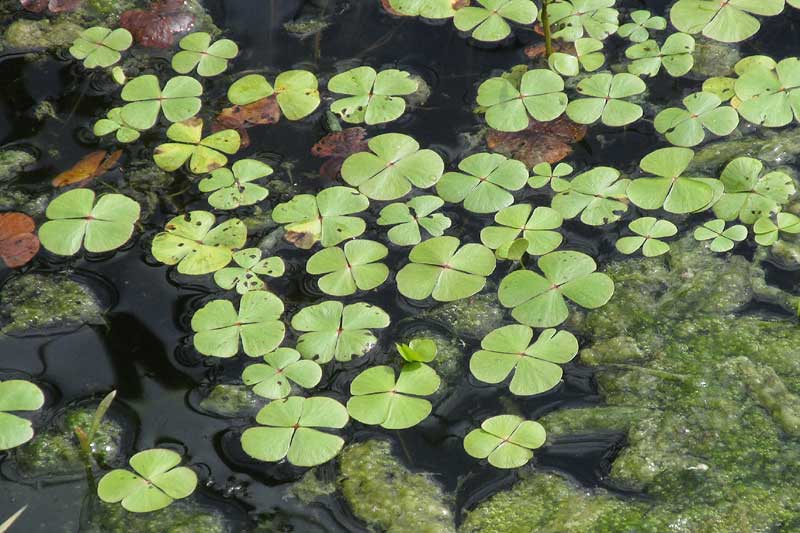
from the November 30, 2014 Newsletter issued from Río Lagartos, on the Yucatan Peninsula's northern coast (~N21.60°, ~W88.16°), Yucatán state, MÉXICO
HAIRY WATER CLOVER
Alongside the little road between Río Lagartos and San Felipe there are several shallow ponds and in one grew what can only be described as a lot of four-leaf clovers with submerged stems and roots, only their leaves floating at the water's surface. That's them at the top of this page.
Of course clovers don't grow like this, and I'd seen such a thing before so I knew it wasn't clover despite first impressions. Wading into the water I uprooted a cluster of leaf stems and stretched them out on the water's surface to see how long the stems were. This is shown below:
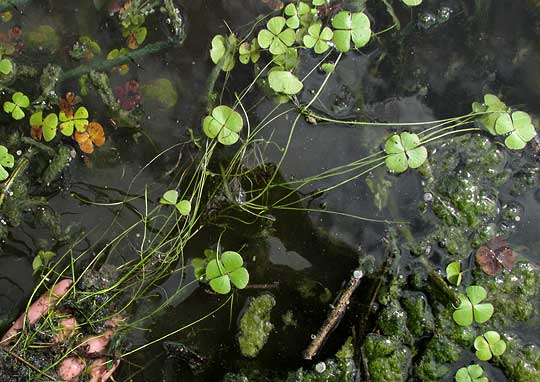
If I'd needed a hint as to what kind of plant this was, I'd have been told by what's shown below:

That looks just like a fern's fiddlehead -- the special form immature fern fronds take as they enlarge and unfurl. When something like a fern's frond is rolled coilwise from its top downward, it's said to be "circinate," and this was definitely a circinate fern frond unrolling. You might like to compare what's in the last picture with uncoiling fiddelheads of North America's Christmas Fern, shown at www.backyardnature.net/n/09/090302cf.jpg.
So, when you see an aquatic "clover" with its leaves floating on the water's surface, think of the truly aquatic fern genus Marsilea. Ferns in that genus often are called Water Clovers, despite having nothing to do with clovers other than looking like them.
Seven Marsilea species are listed for Mexico, of which only one is known to occur in the Yucatán, and that's MARSILEA VESTITA, so I'm assuming that that's what we have. However, the online Flora of North America asserts that "Species identification is virtually impossible without fertile material," so I can't be sure. I looked for the small reproductive structures, known as sporocarps, but could find none. The floating leaflets do display slender markings on their undersides, almost like spore-producing "sori" of spleenwort ferns, but these were just streaks having nothing to do with reproduction, and I can find anything about their purpose, if there is any. The streaks are shown below:
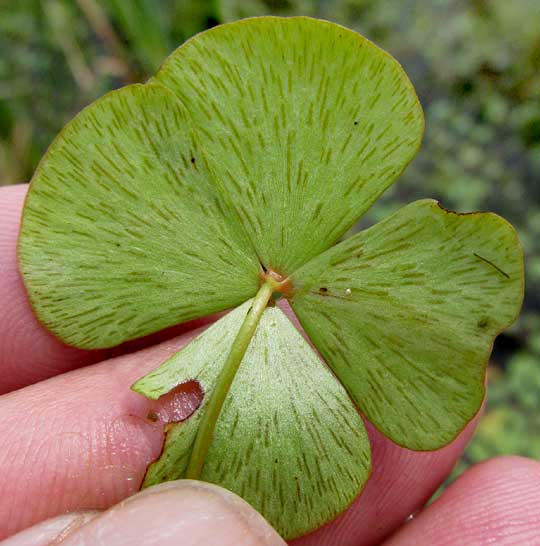
Marsilea vestita is often known as Hairy Water Clover and is distributed throughout most of the western US and adjacent western Canada, south through Mexico, plus in Perú in South America.
Sometimes Hairy Water Clover is sold in gardening stores as an attractive addition to backyard goldfish or lily ponds.
from the January 11, 2015 Newsletter issued from Río Lagartos, on the Yucatan Peninsula's northern coast (~N21.60°, ~W88.16°), Yucatán state, MÉXICO
WATER CLOVER PRODUCING SPORANGIUM CASES
The question arises as to how an aquatic fern produces and disseminates its spores. Last November when I found Hairy Water Clover I looked for spore-producing bodies -- more technically referred to as "sporangium cases" or "sporocarps" -- on many ferns but found nothing. Now that the ferns'pond has disappeared and the ferns look like four-leafed clovers growing on spongy, moist soil, I decided to take another look. You can see what the ferns look like now below:
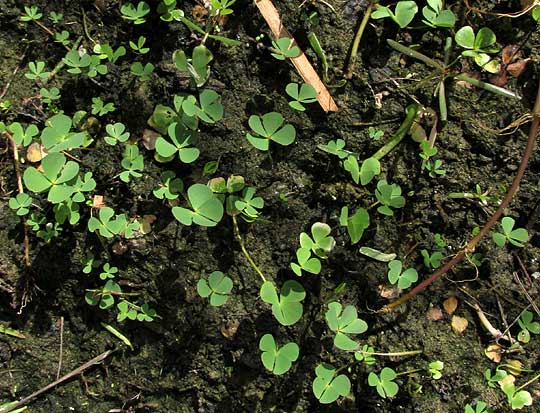
The clover-like leaves' long stems arise from wiry rhizomes creeping through the mud just below the surface. Below, you can how roots arise from the rhizomes' nodes:
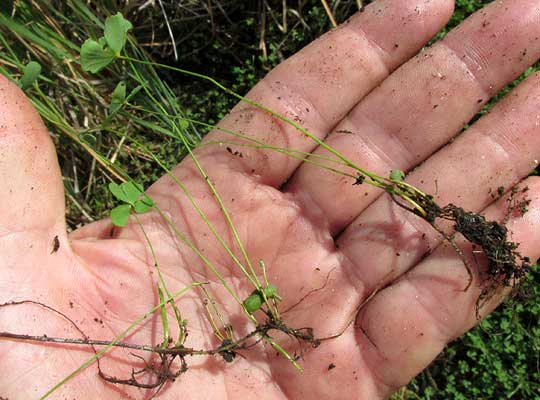
Water clover's sporangium cases arise at the fronds' petiole bases, and in the above photo you can see green, lentil-shaped items on their own short stems just above where clumps of petioles issue from the rhizome. Those are sporangium cases. A closer look is provided below:
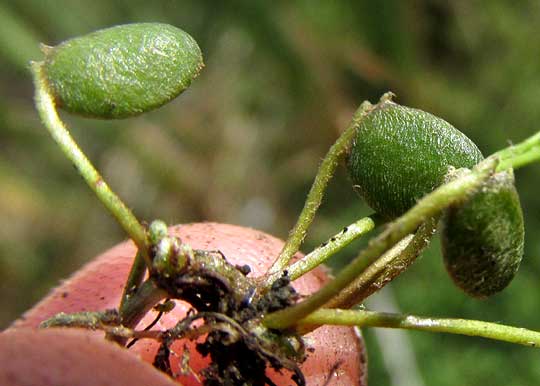
The Flora of North America says that among North American water clovers -- genus Marsilea -- sporangium cases are borne aboveground in all but one species. If those other Marsilea species with aboveground sporangium cases wait until their ponds dry up before producing their fruiting bodies, then we know how most water clovers disseminate their spores: the usual way, via the wind. Our ferns' sporangium cases were held at or just below the mud's surface, but they weren't yet mature. As the ponds continue to dry out I can imagine that not only will the cases' stalks elongate but also the mud will contract as it hardens, leaving the cases high and dry, and exposed to the dry season's hot wind.
The Flora of North America also says that "Species identification is virtually impossible without fertile material." In November we identified our local water clovers as Marsilea vestita because that's the only species known to exist here. Now that we have sporangium cases it's easy to confirm that we really do have Marsilea vestita, because the sporangium cases of other species lack the tiny "hooks" clearly visible on the cases just above where the cases attach to their stalks. Other species may bear various kinds of projections there, but not like these.
This week as I searched for our water clover's sporangium cases, at first I didn't find them, because first I looked where the water had been deepest and had remained standing longer. Only when I went to the edges and where the ground rose because of buried rocks did cases appear. This suggests that our water clovers are producing their sporangium cases now not because of day length or cooler temperatures, but because the water has gone down and soon the ground they're in will be dry.